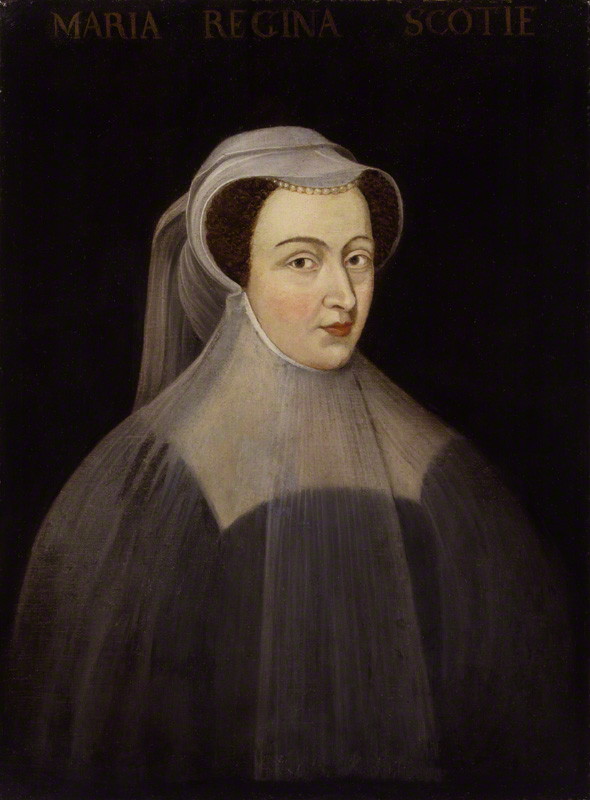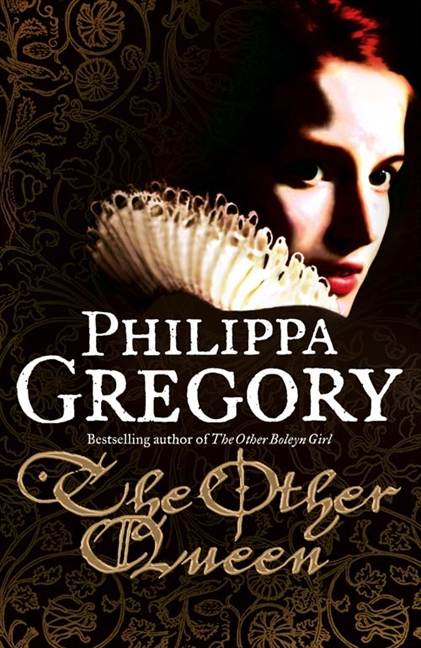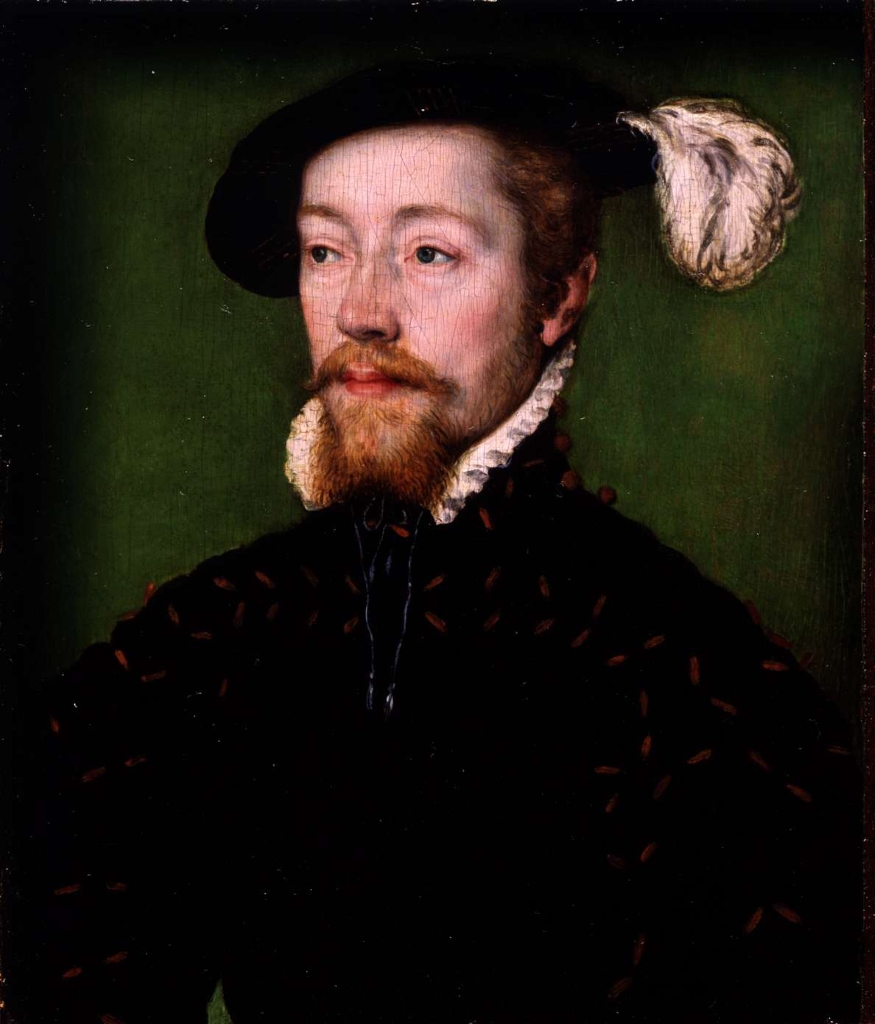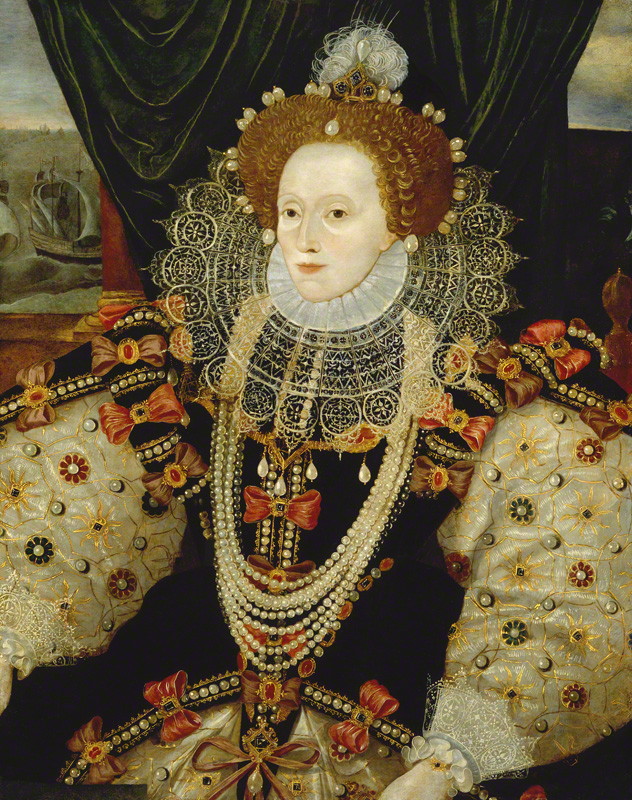Mary Queen of Scots led a turbulent life, both politically and personally. She is most remembered for being married three times, being widowed three times, and eventually being executed for treason by her cousin, Queen Elizabeth I of England.
Mary became queen when she was only six days old when her father, James V of Scotland, died. She was the only surviving child of King James V and his second wife Mary of Guise. Like her father before her, who had also inherited the crown as an infant, a number of regents ruled on Mary’s behalf until she was old enough to rule.
She was sent to France in 1548 and spent most of her childhood at the French court. In 1558, she married the Dauphin of France, Francis, and a year later he was crowned king, making Mary queen consort of France. Francis died the next year, leaving Mary a widow aged 18. Mary’s mother died the same year.
She returned to Scotland and in 1565 married her cousin, Lord Darnley. It was not a happy marriage, as despite the couple reportedly being in love at first, Lord Darnley was a vain and arrogant man.
Mary became pregnant in 1566. Rumours began to circulate that the baby’s father was not Lord Darnley, but rather Mary’s private secretary, an Italian named David Rizzio. Lord Darnley was jealous of their friendship and a group of Protestant nobles formed a plan to murder Rizzio. The group burst into the queen’s private dining room and stabbed Rizzio 56 times in front of Mary, who was seven months pregnant at the time. In June she gave birth to a son, the future James VI, who was next in line for both the Scottish and English thrones.
By the end of 1566, Mary was allegedly forging a relationship with Lord Bothwell and was seeking a way to dissolve her marriage to Lord Darnley. In February 1567, Mary and her husband were staying at Kirk O’Field. Reportedly, Mary remembered late at night that she had to visit friends nearby and left. The house exploded and Lord Darnley was found in the garden, strangled to death.
Three months later, Mary married Lord Bothwell. He was disliked by the Scottish aristocracy and they rose up against Mary. Bothwell fled to Europe and was imprisoned in Dragsholm Castle, Denmark, where he reportedly went insane. Bothwell was one of those accused of murdering Lord Darnley but he was acquitted.
Mary herself was arrested and imprisoned at Lochleven Castle. She was forced to abdicate in favour of her son, James. She escaped from captivity and travelled to England in the hope that her cousin Elizabeth I, the Queen of England, would be sympathetic to her plight. However, Mary posed a threat to Elizabeth. Elizabeth, a Protestant, had gone some way to achieving a religious peace in England. Mary in England was a threat. Elizabeth’s fear was that she could become a focal point for the Catholic cause and prompt a rebellion against the queen. In the eyes of the Catholic citizens, Mary had a stronger claim to the English throne. The Catholics did not recognise Henry VIII’s marriage to Anne Boleyn, Elizabeth’s mother, as they did not accept Henry VIII’s divorce from his first wife Katherine of Aragon, making Elizabeth illegitimate.
It was unsafe for Mary to go back to Scotland, and unsafe for Elizabeth for Mary to be in England, so Elizabeth had her imprisoned with the Earl of Shrewsbury and his wife Bess of Hardwick – one of the richest couples in England. During her imprisonment, Mary expressed the opinion that she should be Queen of England, even receiving the backing of the Pope, which meant that if a Catholic assassinated Queen Elizabeth, it would not be seen as a sin by the Catholic Church. The English government kept a close eye on Mary, trying to build up a case against her to charge her with treason. Sir Francis Walsingham led the investigation.
In 1586 a plot to murder Elizabeth, free Mary and put her on the throne was discovered. It was known as the Babington Plot as its main perpetrator was Sir Anthony Babington. Babington wrote, in code, a letter to Mary outlining his plans, and she wrote back in agreement. Babington was arrested, charged with treason and put to death in September 1586.
The next month, Mary was put on trial, as now Walsingham and his men had concrete evidence to convict her. She was found guilty of plotting to kill the queen. In February 1587, Mary was given just a days' notice that she would be executed.
‘He’ll win Scotland over for me,’ Henry says in my ear as the bride and groom walk handclasped down the aisle. Henry’s niece throws me a naughty wink as she goes by. She is a most unruly bride, openly relieved at finally being allowed to marry aged nearly thirty years old, after two scandals, both of them involving young men from the Howard house. ‘He’ll win Scotland for me and then Prince Edward shall marry the little Queen of Scots – Mary – and I shall see Scotland and England united.’
From The Queen's Fool
‘I listen and listen, and once I asked her directly. She said that she wanted no blood spilt that could be spared. She won’t execute you and she must let you go free when Lady Jane goes free.’
‘I wouldn’t if I were her,’ he said quietly. ‘If I were her, I would rid myself of Elizabeth, of Jane, of my brother and of me; and name Mary Stuart as the next heir, French or not. One clean cut. That’s the only way to get this country back into the Papist church and keep it there, and soon she will realise it. She has to wipe us out, this generation of Protestant plotters.
From The Virgin's Lover
There were even more who whispered in secret or said nothing at all; but who longed for the coming of Mary, Queen of Scots and Princess of France, who would bring peace to the kingdom, a lasting alliance with France, and an end to religious change. She was younger than Elizabeth, for sure, a sixteen-year-old girl; but a real little beauty, and married to the heir to the French throne with all that power behind her.
From The Other Queen
For most of my life I have been adored by fools and hated by people of good sense, and they all make up stories about me in which I am either a saint or a whore. But I am above these judgments, I am a Queen.
Image: Mary Queen of Scots by François Clouet, c.1560, National Portrait Gallery (NPG 555)



